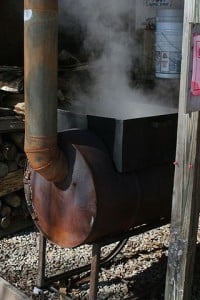
If there is a more popular summertime institution than out-of-doors cooking I am hard-pressed to think of it.
Staying with this train of thought, it turns out there just might be more to this outdoor culinary experience than meets the grill.
“When [University of California at] Davis scientists collected air pollution particles in Fresno and then exposed laboratory mice to them, they found that one of the most toxic sources was the backyard grill,” penned Los Angeles Times writer Bettina Boxall. Air particle samples were collected in 2008 and 2009.
“Along with particles from vehicle and wood-burning emissions, particulates from residential cooking had the greatest measurable impacts on mice lung function.”
It follows then that the fuel used for outdoor cooking or grilling, when lit, would emit pollutants.
As for the UC Davis study specifics, Boxall wrote: “But [Anthony] Wexler [study coauthor and UC Davis Air Quality Research Center Director] said his research breaks new ground by collecting atmospheric samples and using them to gauge the toxicity of different sources of particle pollution.”
Boxall further writes: “If the results are validated by other research, Wexler said it may be more cost effective for air pollution regulations to focus on the source of particles and their toxicity rather than their size – the basis of current standards.”
“More cost effective?” How? What’s more, what, if any, effect will study findings have on outdoor cooking and grilling fuel production and distribution, for one? In other words, what does it all mean?
Many questions, I know.
As it may relate, Wexler was quoted by Boxall in the Times article in question as having said, “‘If we’re just regulating the toxic sources, then we’re going to decrease the toxicity of the particles in the atmosphere. That’s going to save lives.’”
I sincerely hope the good doctor is correct.
For the study, Wexler teamed up with UC Davis School of Medicine pediatrics professor Kent Pinkerton.
– Alan Kandel
I rather grill outdoors. It’s so much fun 🙂